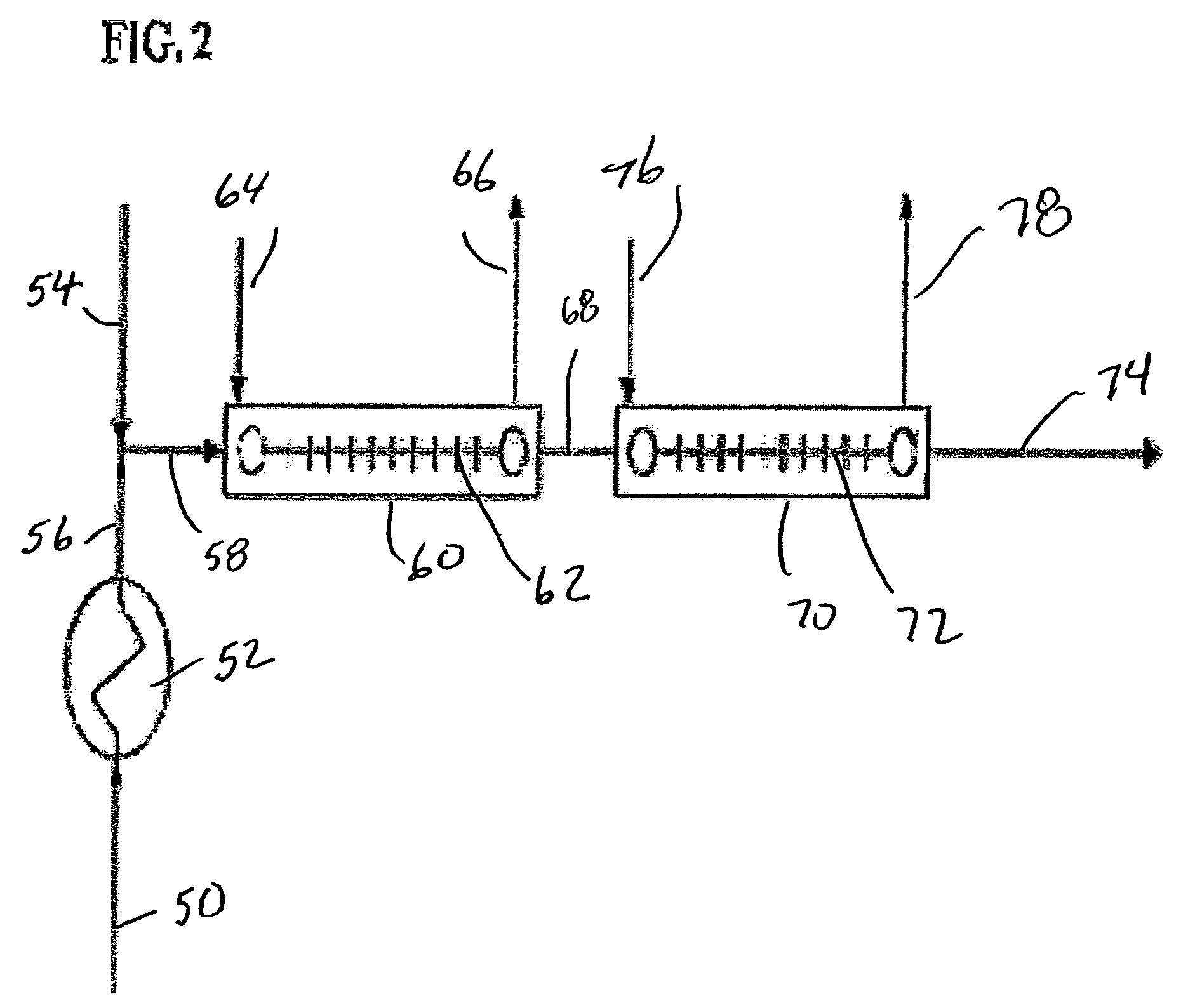Calcium salt saponification of polyunsaturated oils
a polyunsaturated oil and calcium salt technology, applied in the field of unsaturated fatty acid calcium salt nutritional supplements, can solve the problems of reducing the shelf life of calcium products to unacceptable levels, affecting the shelf life of calcium products, so as to improve the shelf life and storage stability of finished products, the effect of improving the storage stability of saponified unsaturated fatty acid calcium salts
- Summary
- Abstract
- Description
- Claims
- Application Information
AI Technical Summary
Benefits of technology
Problems solved by technology
Method used
Image
Examples
example 1
[0055]360 Grams menhaden fish oil was charged to a sealed glass-lined vessel equipped with mixing blades. A 0.5 liter per minute nitrogen blanket was applied to the vessel. The menhaden fish oil was heated to 30° C., and 84 grams calcium hydroxide was added and thoroughly mixed. The vessel was then resealed. The mixture was stirred and heated until the temperature rose to 205° C., at which point the saponification reaction occurred, and the temperature rose to 230° C. During the saponification reaction a light smoke was released and the material formed a yellow taffy-like material. The material was cooled inside the vessel to 25° C., at which point the nitrogen blanket was removed and the vessel was opened. The material, which had hardened through cooling, was discharged from the vessel and processed into small granules of a dry, free-flowing calcium salt.
example 2
[0056]Example 1 was repeated, except that the menhaden fish oil was charged to a sealed glass-lined vessel without nitrogen blanketing. The menhaden fish oil was heated to 25° C., and the calcium hydroxide was added and thoroughly mixed. The vessel was then resealed. A vacuum of 280 nm Hg using nitrogen as the vacuum gas was drawn on the sealed vessel. The mixture was stirred and heated until the temperature rose to 225° C., at which point the saponification reaction occurred, and the temperature rose to 245° C. During the saponification reaction a light smoke was released and the material formed a yellow taffy-like material. The material was cooled inside the vessel to 30° C., at which point the nitrogen blanket was removed and the vessel was opened. The material, which had hardened through cooling, was discharged from the vessel and processed into small granules of a dry, free-flowing calcium salt.
example 3
[0057]One kilogram of menhaden fish oil was charged to a stainless steel vessel equipped with plow mixing and a vacuum stack. A nitrogen blanket having a flow rate of 3.0 liters per minute was applied to the vessel. The menhaden fish oil was heated to 25° C., and 200 grams calcium hydroxide was added and thoroughly mixed using the plow mixers set at between 10 to 20 rpm. The mixture was heated until 205° C., at which point the saponification reaction occurred, and the temperature rose to 212° C. During the saponification reaction a light smoke was released and the material formed a yellow taffy-like material. The material was cooled inside the vessel to 77° C., the plow mixer speed was increased to between 25 to 40 rpm. The material continued to cool inside the vessel and hardened as it cooled. The material was cooled to 38° C., at which point the nitrogen blanket was removed and the vessel was opened. The material was discharged from the vessel and processed into small granules of ...
PUM
| Property | Measurement | Unit |
|---|---|---|
| Fraction | aaaaa | aaaaa |
| Fraction | aaaaa | aaaaa |
| Percent by mass | aaaaa | aaaaa |
Abstract
Description
Claims
Application Information
 Login to View More
Login to View More - R&D
- Intellectual Property
- Life Sciences
- Materials
- Tech Scout
- Unparalleled Data Quality
- Higher Quality Content
- 60% Fewer Hallucinations
Browse by: Latest US Patents, China's latest patents, Technical Efficacy Thesaurus, Application Domain, Technology Topic, Popular Technical Reports.
© 2025 PatSnap. All rights reserved.Legal|Privacy policy|Modern Slavery Act Transparency Statement|Sitemap|About US| Contact US: help@patsnap.com



